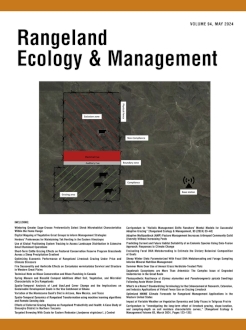The Montezuma quail (Cyrtonyx montezumae) is a game bird that inhabits oak-juniper-pine savannas of Arizona, New Mexico, and Texas, extending its range south into montane grasslands of Mexico. The species occurs within a complex matrix of public and private rangeland in which land management regimes and habitat quality are disparate. Given that food limitation can be a driver of wildlife populations, studies of the Montezuma quail diet can inform the management of its habitat. Our objective was to determine the composition and variation of the Montezuma quail's diet in Arizona, New Mexico, and Texas by macrohistological analysis of crops (n = 175) collected in 2016–2020 during winter in all three states and during spring in Texas. We used Dirichlet regression to determine the effects of ecological factors on diet composition. Winter diet in Arizona was mainly represented by woodsorrel bulbs (Oxalis spp.; 35.22% of dry weight), sedge rhizomes and bulbs (Cyperus spp.; 30.92%), and acorns (Quercus spp.; 7.17%). Winter diet in New Mexico consisted mainly of sedge bulbs (64.13%), bushbean seeds (Macroptilium sp.; 15.82%), and Hall's panicum seeds (Panicum hallii; 10.11%). Winter diet in Texas was composed of sedge rhizomes and bulbs (28.17%), Texas snoutbeans (Rhynchosia senna; 22.49), Hall's panicum seeds (19.54%), and wild onions (Allium spp.; 8.58%). Spring diet in Texas included sedge rhizomes and bulbs (67.90%), woodsorrel bulbs (19.49%), and Texas snoutbeans (5.55%). Geographic variation in diet composition was related to climatic, ecological, and intrinsic factors. For instance, in addition to being consumed by males at a higher rate, woodsorrel bulbs were also consumed at a greater rate in hotter and wetter locations. Along with novel information about the Montezuma quail diet in Texas, our investigation will stimulate questions relevant to rangeland and wildlife management, including determinants of habitat quality and the effects of climate change on wildlife populations.
BioOne.org will be down briefly for maintenance on 12 February 2025 between 18:00-21:00 Pacific Time US. We apologize for any inconvenience.
How to translate text using browser tools
17 May 2024
Variation of the Montezuma Quail's Diet in Arizona, New Mexico, and Texas
Ana G. Paredes-Acuña,
Alberto Macías-Duarte,
Reyna A. Castillo-Gámez,
Angel B. Montoya,
James H. Weaver
ACCESS THE FULL ARTICLE

Rangeland Ecology and Management
Vol. 94 • No. 1
May 2024
Vol. 94 • No. 1
May 2024
Cyrtonyx montezumae
diet composition
diet variation
Montezuma quail
spring diet
winter diet




